 Facebook
Facebook
 X
X
 Instagram
Instagram
 TikTok
TikTok
 Youtube
Youtube

The old man was never one for fireworks. It had something to do with his surviving the Invasion of Normandy. Friends and relatives would take me to see displays of fire-flowers (as my maternal grandpa Zadie Aaronson called them) on the 4th while Dad stayed home. In time, I came to learn that the “bombs bursting in air” that we celebrated in song before baseball games weren’t glittery man-made pyrotechnic displays; they were the same bombs that snuffed out the majority of Dad’s platoon. Later in life, I made a good friend who returned from Iraq with a case of PTSD so bad he was thrilled when SeaWorld put an end to their nightly explosion show. Is it any wonder that I chose to spend so many Independence Days in a dark room?
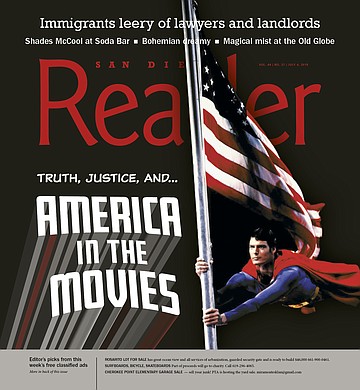
It was a Saturday matinee at the second-run Pickwick Theatre in Park Ridge, Illinois. Readers may recognize the name from its vast marquee used as the backdrop for the title sequence of Siskel and Ebert’s At the Movies. The Pickwick was a spacious old neighborhood single-screen (constructed in 1928 with 1500 seats), and per usual, I was parked fourth row center.
The afternoon fare consisted of visit #2 to Clint Eastwood’s principled screwball comedy western, Bronco Billy. The film opened with Billy’s traveling wild west tent show — on the road and about to commence. Scatman Crothers took center frame to announce Billy’s entrance, and as if timed to the second, a teenage kid emerged from behind the Pickwick’s curtains (stage left), and began walking towards the center of the platform.
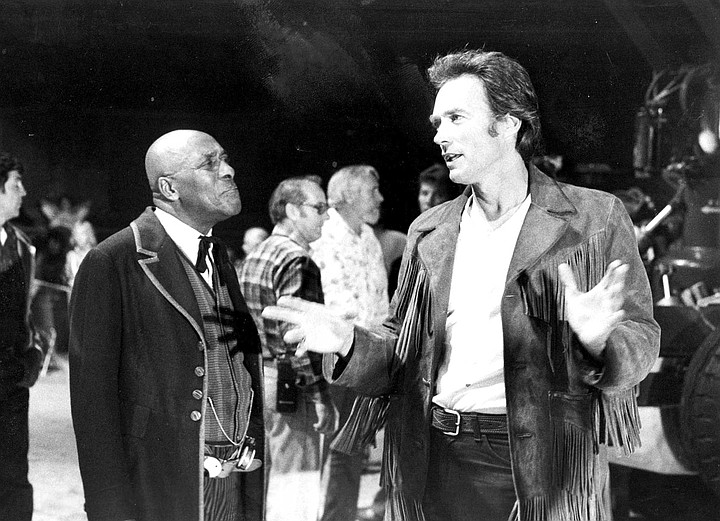
Did I mention it was July 5, 1980, the day after America celebrated Independence Day? That might explain why the sight of a giant tin can with a sparkling fuse, swinging loosely in the left hand of the unbilled live-action co-star, didn’t seem all that out of place. Without once looking out at the projector’s white glare, the scraggly teen methodically hit his mark and paused before depositing the pint-sized torpedo in the footlights. As if to indicate a job well done, our hero then brushed his hands together before slowly making his exit (stage right).
Twenty-seconds later, the room was aglow with fireworks. I was in the middle of what felt like the “Step In Time” number from Mary Poppins meets Comiskey Park after someone hit a grand slam. Was this part of the show? If so, I wondered, why squander the display on a low-attended matinee when you’re sure to get more bang for your buck at the evening performance? I ducked in time to avoid a whizz-bang hurtling toward my head. Fireballs and spangled meteorites ricocheted off the ceiling, some actually tapping on the projection booth glass. All that was visible as I looked back in the booth’s direction were the tops of heads bobbing up from behind seatbacks. My wide-eyed inner-child deemed it a magnanimous way to celebrate American independence, but I couldn’t help wondering: isn’t this indoor display of pyrotechnics a bit dangerous?
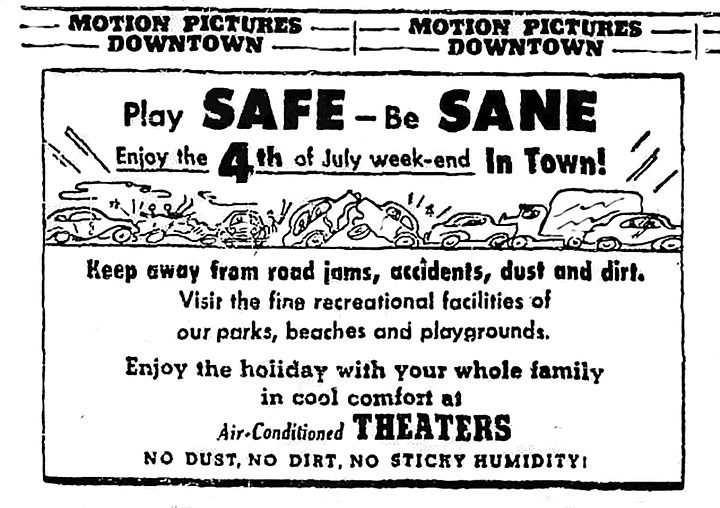
The show-within-the-show lasted no more than 90 seconds, but it left the cavernous auditorium filled with smoke. Even at close range, one could barely make out the screen, but the thought of running out to the lobby never once crossed my mind. My maiden screening of Bronco Billy — on an almost equally fogged-in opening night at the Sheridan Drive-In — was far from optimal. Apart from the pea soup, the evening’s one everlasting memory was a scratchy print of The Gauntlet, complete with Spanish subtitles, that rounded out the double-bill. Bronco Billy demanded the hard-top treatment and dammit, I was going to get it!
A reel passed before a hand tugged at my shoulder. “Would you please accompany me to the lobby, sir?” asked a voice from the fog. Who in the hell do you think you are, interrupting my viewing pleasure? “Look, buddy, can’t it wait until the picture is over…?” A flashlight on the officer’s badge cut me short.
Inside the cramped manager’s office, the bull perched atop the desk, fired up a butt, and began grilling me as to the identity of the alleged pyro-assailant. “We brought you here because you were the one seated closest to the screen,” he began.
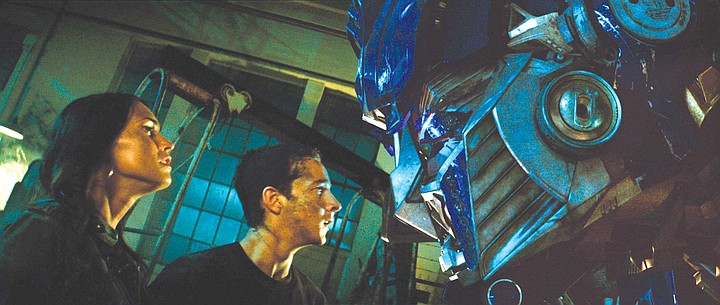
Habitual behavior does have its disadvantages.
“You don’t seem surprised,” he said, motioning for me to take a chair. I stupidly confided that I thought the fireworks display might have been a part of the show, sort of a post-4th perk. That’s all it took for him to go full Jack Webb on me. “Do you know how dangerous this could have been, Mr.” — glance down at my driver’s license — “Marks? Do you want to see this theatre burned to the ground?”
You bet! Get your red hots on your sticks. I’m the first one to encourage arson, particularly when a vintage movie theatre is targeted. Can’t this gumshoe spot a movie lover when he’s sitting right in front of him?
“Would it be okay if I went back and watched the rest of the movie?” I asked. “It’s my second time.” Again with the TMI. “You’ve already seen it?” he challenged, shooting the manager a look as if to say, “What kind of mental patient would waste their time watching the same show twice?” He smiled, pulled out a notepad, and sighed, “Well then, you know what happens. There should be no problem if you miss a few more minutes.”
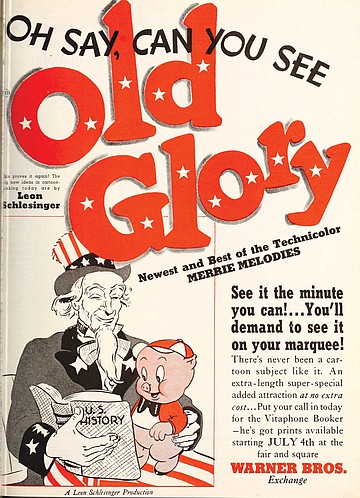
In my mind, The Gauntlet’s Ben Shockley is growling “Aaaaaaasshole!” through gritted teeth.
Officer Friendly continued his line of questioning (height, shoe color, complexion, etc.) for another five minutes before letting me go. It turned out the little rascal was a disgruntled former employee with a score to settle. But all that mattered to me was that he had just masterminded one of the most memorable times I’d ever had in a movie theatre. I wasn’t about to squeal to no copper, see.
When giant toys fight
The action quickly went from scud to dud on July 4, 2007 when a different kind of incendiary device detonated in the late lamented UA Horton Plaza. Transformers was Hasbro’s first foray into feature film production. (Strange to think of it, especially when one considers how every summer blockbuster produced over the past 40 years has felt as though it was released by a toy company.) For those eager to mine the depths of Michael Bay’s ineptitude, look no further than the opening action sequence. In the 30 seconds it takes the Decepticon helicopter to land at a military base in the desert of Qatar, the lighting changes more times than Cher’s costumes during a prime time special.
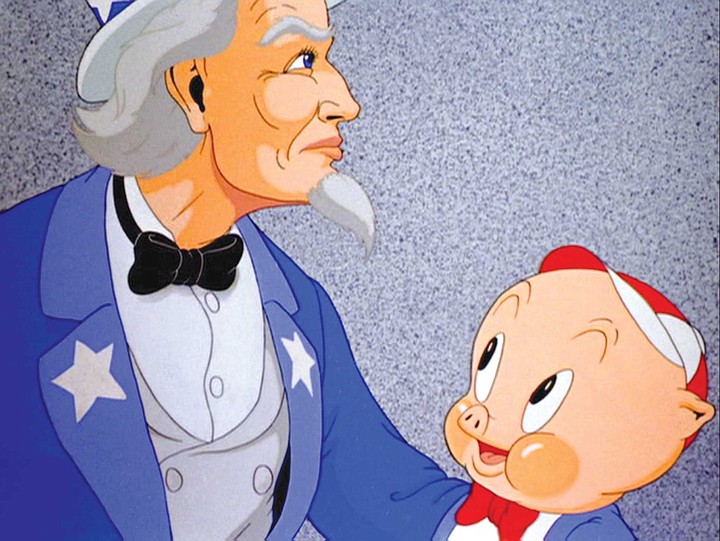
There is no reason why a film with so little imagination should run almost two-and-a-half hours. A possessed auto taking control of its driver’s destiny is nothing new, and fans of John Carpenter’s Christine are sure to leave feeling short-changed. When Christine’s radio magically turned on, the oldies added attitude and swagger. By way of contrast, Bumblebee’s tuner underscores the obvious: time spent watching Shia LeBeouf winning the car and winning over the empty-noggined hottie of his dreams (Megan Fox) amounts to sand piled high on the tracks. We’re here for robot wars, not mush. Those in need of juvenile teen romance served lukewarm should revisit Star Wars: Episode 4 - A New Hope.
Initially, the automatons come at us in small doses — an adorable animated erector set, reminiscent of Short Circuit’s cloying Number 5, is sent to scout the Pentagon. This is presumably an attempt on Bay’s part to build and layer a narrative. And when the giant toys are finally allowed to go at it, and the camera pulls back to capture the battle scenes on the streets of downtown LA in long shot, the results border on absolutely spectacular. So why did the upright Cybertronian junkyards have to speak? Subtitled robot-ese would have been preferable to hearing a race of lantern-jawed cyborgs channeling the vocal inflection of an overcranked James Earl Jones.

Bay gives some fine character actors small roles to lend credibility to his childish vision. Jon Voight plays a decidedly befuddled Secretary of Defense, Anthony Anderson is a rubbery computer geek, and John Turturro provides some desperately needed third-act comic relief. Even Bernie Mac picks up a paycheck and a hot bowl of soup playing a used car salesman. Advance word pegged Transformers as a feature length commercial for General Motors, and with good reason. With all the product plugs, the MPAA should have made this the first film to receive a GM rating.
Porky’s pledge
Four constants accompanied me since birth: Jerry Lewis, Groucho Marx, Warner Bros. cartoons, and Superman. The older I get, the better they all look. Let’s set the flesh-and-blood funnymen aside for the moment, and instead focus on fantasy. Many of the Looney Tunes and Merrie Melodies released during the war years were flag-waving celebrations of the American spirit, aimed at supporting and boosting morale on the home front. (Warner Bros. produced a more adult series of shorts featuring the bumbling Private Snafu, geared exclusively for servicemen.) Had Mom informed her little Scooter that what had him doubled-over with laughter was called propaganda, I’d have no doubt interpreted the word to mean “hilarious.”
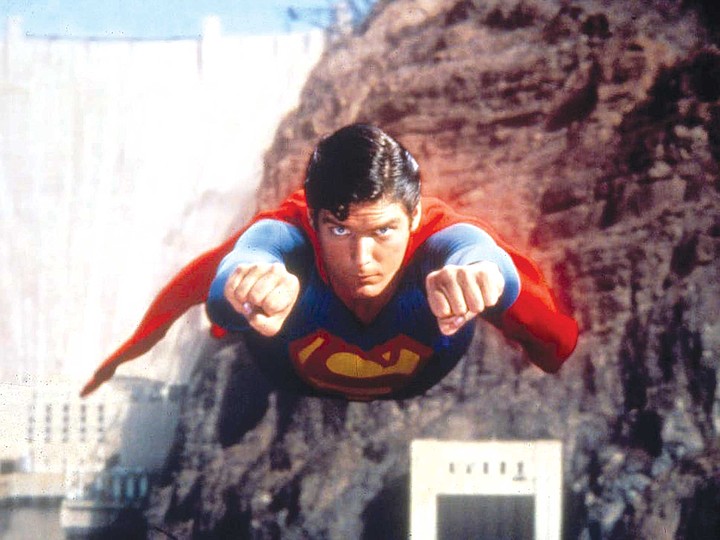
We were the last family on the block to own a black-and-white television, so I’m not surprised that I made it to age six before WB cartoons first came to me in color. It was July 3, 1963, and Adventure Day Camp had arranged for a day trip to a Coca-Cola bottling plant. Across the globe, people recognized the soft drink as a uniquely American icon. Back home, the goal was to get kids hooked on fizzy, caffeinated sugar water at as young an age as possible. Through giant glass windows that spanned the length of the plant, we followed the clinking bottles on their journey from washer to filler to crowner. Before sending each camper home with parting gifts — a carton of six 10-ounce bottles and a miniature American Flag — we were ushered into a small projection room with a walled-off booth, fixed-ratio screen, and 60 or so seats.
The 16mm Technicolor print was scratchy, but the color was embossed, otherworldly, a boldness of hues that, like Lucille Ball’s hair, exist nowhere in nature.
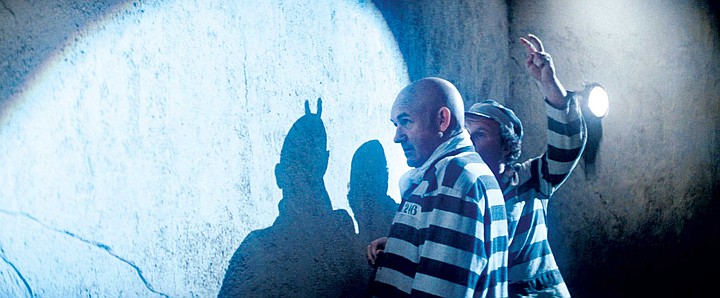
Porky Pig was the first cartoon superstar to spring from Termite Terrace, the semi-affectionate nickname given the studio’s in-house animation unit. And of all the squash-and-stretch luminaries to emerge from the Warners stable, Porky was by far the most compliant. For his second cartoon (and Tex Avery’s first), the pig acted the part of a gold prospector fitted with a coin slot carved in the back of his head. From then on, his range proved boundless: the pig could play a pantsless schoolboy stammering his way through Longfellow or a second banana playing Friar Tuck opposite Daffy’s Robin. When the story called for it, he could manage a stubby flatfoot in blue serge threads, his bulbous head topped by a wide-brimmed fedora, or a harried suburbanite looking to give his dog a much-needed flea bath.
Old Glory, which made its debut on July 1, 1939, was Chuck Jones’s first pairing with America’s favorite cob-roller. Porky stars as a wide-eyed, apple-cheeked schoolboy whose refusal to memorize the Pledge of Allegiance summons the spirit of a rotoscoped Uncle Sam who parks the little porker on his knee and administers a civics lesson. Of the hundreds of toons the studio released throughout the years, this is the least loony, most uncharacteristically Disneyesque of the bunch. No wonder the folks at Coke went with it. Spoiler alert: ironically, when P-P-P-Porky eventually gets around to reciting the Pledge, he does so without so much as one stumble.
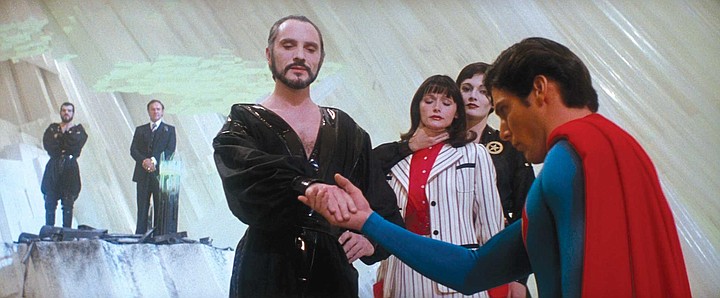
Dad, Superman, and me
Batman v Superman should have had the same running time as Bambi Meets Godzilla. In under two minutes, the Man of Steel would reduce Gotham City’s Dark Knight and his rogue’s gallery of rough trade Romeos to dust. Superman can outpace the Flash, hold his breath longer than Aquaman, punch the Hulk into the new year, reduce Captain America’s indestructible shield to guitar pics, and use Wolverine’s retractable adamantium-plated bone claws to dislodge food stuck between his teeth.
The notion of dying prickled my consciousness at a very early age. First to check out: Grandma Eva Marks, followed by George Reeves, the actor who for many served as the first coming of Kal-El. If facial expressions easily translated into words, Eva Marks’ clenched physiognomy would have been forever asking, “What smells”? I do not recall her ever paying a call on Larry and Babe’s (and Scooter’s) apartment on Chicago’s North side. The only time Eva ventured outside of her roomy Oak Park two-flat was in a casket. She died within months of Superman, who, unlike Grandma Eva, visited our living room on a weekly basis.
I was not yet four and unable to cipher a headline, so the sight of Clark Kent splattered across the front page of the Chicago American signaled no more than a mere career move for the mild-mannered reporter. But word on the sandbox painted a picture of a disillusioned Reeves, so drunk that he jumped out a window to prove to partygoers that he could indeed fly. More than likely, it was a self-inflicted gunshot wound, administered by an on-the-skids character actor forever joined at the hip to one particular role. No screening of Gone with the Wind would be complete without at least one patron gasping, “Hey! It’s Superman!” the moment Tarleton-twin Reeves takes to the screen.
After the show ceased production, Superman was brought to me by my dad, in comic book form, coiled amid the accordion folds of the once-hefty Sunday papers. Saturday night on his way home from closing Larry’s Grill, Dad would stop at Blind Jimmy Arnold’s newsstand, located under the Thorndale elevated train stop, and pick up that week’s reading material for the family. The hours after dinner found us sprawled across the drab olive green sofa. With the comic book propped against his knees, Dad would go full Mel Blanc, boisterously voicing all the players in Superman’s latest adventure, pumping added life into each dialogue bubble.
Years pass, and we’re in the front seat of the family Rambler en route to somewhere. I remind Larry of our Saturday nights spent rummaging through the funny pages and his vocal interpretation of the Metropolis menagerie, and together we laugh. Larry didn’t know popular culture from a throat culture, but nothing got past his JPS (Jewish Perceiving System). Out of nowhere comes, “Did you know that Superman was Jewish?”
“Sure” I jumped in, hoping to beat him to the punch line. “No earthling could stretch a penny like Superman.”
“Are you going to be an asshole for the rest of your life?” he groused. “Come on. Be serious for a minute. The two guys who created Superman were Jews... Joe and Somebody Somebody. You should know. You read the stuff.”
Jerry Siegel and Joe Shuster were Superman’s proud papas, with animators Max and Dave Fleischer — creators of a series of breathtakingly rotoscoped propaganda shorts released during the war — earning honorable mention as the Man of Steel’s paternal grandparents. It was Kent’s gentile spitcurl that helped him to assimilate.
It’s impossible for me to watch Richard Lester’s Superman II without thinking of Larry. Listen carefully during the Niagara Falls sequence, just after Superman saves the boy from a potentially watery grave. A background spectator can be heard saying, “He must be Jewish!” It was one of the last movies I saw with my dad in a theatre, and don’t think the line wasn’t followed by an elbow to my ribs.
Superman II was the one picture that forever ruined comic book movies for me. It has everything that the Marvel and DC movies lack: humor that’s organically grown rather than being grafted with the one-upmanship exchange of one-liners, plus adventure and spectacle designed to enhance the storytelling process, not supplant it. There are stretches during which neither Kent nor Superman appear. Let’s see Iron Man or Aquaman give over that much screen time to secondary characters. And add to that the one subplot that for years has perplexed fanboys and fangirls alike: romance.
The story behind the making of Superman II is almost as fantastic as the finished product. In a nutshell, the producers, looking to save money by filming Parts I and II back to back, weren’t happy with director Richard Donner’s work. With much of Part 2 already in the can, Richard Lester (A Hard Day’s Night, Petulia) was brought in to finish the job, which included re-filming 75 percent of what Donner had already completed. Some sided with Donner: Gene Hackman refused to participate in the reshoot, forcing Lester to resort to a voice-impersonated stand-in shot from behind. But Lester brought something to the spandex party: watch the final confrontation in the so-called Donner cut between Superman and a trio of Kryptonian bad guys (well, one of them’s a woman) on the streets of Metropolis. Lester transforms Donner’s campy, effects-driven boxing match into a final showdown that plays like a reel of expertly constructed and paced sight gags.
My third and final 70mm viewing took place in a packed Carnegie Theatre on July 4, 1981. The film concludes with Superman sweeping across the screen, a giant Betsy Ross original in tow. The five times I saw the film in a theater all concluded with the audience erupting in cheers as it rose in unison to give the film a standing ovation. Even Dad.


The old man was never one for fireworks. It had something to do with his surviving the Invasion of Normandy. Friends and relatives would take me to see displays of fire-flowers (as my maternal grandpa Zadie Aaronson called them) on the 4th while Dad stayed home. In time, I came to learn that the “bombs bursting in air” that we celebrated in song before baseball games weren’t glittery man-made pyrotechnic displays; they were the same bombs that snuffed out the majority of Dad’s platoon. Later in life, I made a good friend who returned from Iraq with a case of PTSD so bad he was thrilled when SeaWorld put an end to their nightly explosion show. Is it any wonder that I chose to spend so many Independence Days in a dark room?

It was a Saturday matinee at the second-run Pickwick Theatre in Park Ridge, Illinois. Readers may recognize the name from its vast marquee used as the backdrop for the title sequence of Siskel and Ebert’s At the Movies. The Pickwick was a spacious old neighborhood single-screen (constructed in 1928 with 1500 seats), and per usual, I was parked fourth row center.
The afternoon fare consisted of visit #2 to Clint Eastwood’s principled screwball comedy western, Bronco Billy. The film opened with Billy’s traveling wild west tent show — on the road and about to commence. Scatman Crothers took center frame to announce Billy’s entrance, and as if timed to the second, a teenage kid emerged from behind the Pickwick’s curtains (stage left), and began walking towards the center of the platform.

Did I mention it was July 5, 1980, the day after America celebrated Independence Day? That might explain why the sight of a giant tin can with a sparkling fuse, swinging loosely in the left hand of the unbilled live-action co-star, didn’t seem all that out of place. Without once looking out at the projector’s white glare, the scraggly teen methodically hit his mark and paused before depositing the pint-sized torpedo in the footlights. As if to indicate a job well done, our hero then brushed his hands together before slowly making his exit (stage right).
Twenty-seconds later, the room was aglow with fireworks. I was in the middle of what felt like the “Step In Time” number from Mary Poppins meets Comiskey Park after someone hit a grand slam. Was this part of the show? If so, I wondered, why squander the display on a low-attended matinee when you’re sure to get more bang for your buck at the evening performance? I ducked in time to avoid a whizz-bang hurtling toward my head. Fireballs and spangled meteorites ricocheted off the ceiling, some actually tapping on the projection booth glass. All that was visible as I looked back in the booth’s direction were the tops of heads bobbing up from behind seatbacks. My wide-eyed inner-child deemed it a magnanimous way to celebrate American independence, but I couldn’t help wondering: isn’t this indoor display of pyrotechnics a bit dangerous?

The show-within-the-show lasted no more than 90 seconds, but it left the cavernous auditorium filled with smoke. Even at close range, one could barely make out the screen, but the thought of running out to the lobby never once crossed my mind. My maiden screening of Bronco Billy — on an almost equally fogged-in opening night at the Sheridan Drive-In — was far from optimal. Apart from the pea soup, the evening’s one everlasting memory was a scratchy print of The Gauntlet, complete with Spanish subtitles, that rounded out the double-bill. Bronco Billy demanded the hard-top treatment and dammit, I was going to get it!
A reel passed before a hand tugged at my shoulder. “Would you please accompany me to the lobby, sir?” asked a voice from the fog. Who in the hell do you think you are, interrupting my viewing pleasure? “Look, buddy, can’t it wait until the picture is over…?” A flashlight on the officer’s badge cut me short.
Inside the cramped manager’s office, the bull perched atop the desk, fired up a butt, and began grilling me as to the identity of the alleged pyro-assailant. “We brought you here because you were the one seated closest to the screen,” he began.

Habitual behavior does have its disadvantages.
“You don’t seem surprised,” he said, motioning for me to take a chair. I stupidly confided that I thought the fireworks display might have been a part of the show, sort of a post-4th perk. That’s all it took for him to go full Jack Webb on me. “Do you know how dangerous this could have been, Mr.” — glance down at my driver’s license — “Marks? Do you want to see this theatre burned to the ground?”
You bet! Get your red hots on your sticks. I’m the first one to encourage arson, particularly when a vintage movie theatre is targeted. Can’t this gumshoe spot a movie lover when he’s sitting right in front of him?
“Would it be okay if I went back and watched the rest of the movie?” I asked. “It’s my second time.” Again with the TMI. “You’ve already seen it?” he challenged, shooting the manager a look as if to say, “What kind of mental patient would waste their time watching the same show twice?” He smiled, pulled out a notepad, and sighed, “Well then, you know what happens. There should be no problem if you miss a few more minutes.”

In my mind, The Gauntlet’s Ben Shockley is growling “Aaaaaaasshole!” through gritted teeth.
Officer Friendly continued his line of questioning (height, shoe color, complexion, etc.) for another five minutes before letting me go. It turned out the little rascal was a disgruntled former employee with a score to settle. But all that mattered to me was that he had just masterminded one of the most memorable times I’d ever had in a movie theatre. I wasn’t about to squeal to no copper, see.
When giant toys fight
The action quickly went from scud to dud on July 4, 2007 when a different kind of incendiary device detonated in the late lamented UA Horton Plaza. Transformers was Hasbro’s first foray into feature film production. (Strange to think of it, especially when one considers how every summer blockbuster produced over the past 40 years has felt as though it was released by a toy company.) For those eager to mine the depths of Michael Bay’s ineptitude, look no further than the opening action sequence. In the 30 seconds it takes the Decepticon helicopter to land at a military base in the desert of Qatar, the lighting changes more times than Cher’s costumes during a prime time special.

There is no reason why a film with so little imagination should run almost two-and-a-half hours. A possessed auto taking control of its driver’s destiny is nothing new, and fans of John Carpenter’s Christine are sure to leave feeling short-changed. When Christine’s radio magically turned on, the oldies added attitude and swagger. By way of contrast, Bumblebee’s tuner underscores the obvious: time spent watching Shia LeBeouf winning the car and winning over the empty-noggined hottie of his dreams (Megan Fox) amounts to sand piled high on the tracks. We’re here for robot wars, not mush. Those in need of juvenile teen romance served lukewarm should revisit Star Wars: Episode 4 - A New Hope.
Initially, the automatons come at us in small doses — an adorable animated erector set, reminiscent of Short Circuit’s cloying Number 5, is sent to scout the Pentagon. This is presumably an attempt on Bay’s part to build and layer a narrative. And when the giant toys are finally allowed to go at it, and the camera pulls back to capture the battle scenes on the streets of downtown LA in long shot, the results border on absolutely spectacular. So why did the upright Cybertronian junkyards have to speak? Subtitled robot-ese would have been preferable to hearing a race of lantern-jawed cyborgs channeling the vocal inflection of an overcranked James Earl Jones.

Bay gives some fine character actors small roles to lend credibility to his childish vision. Jon Voight plays a decidedly befuddled Secretary of Defense, Anthony Anderson is a rubbery computer geek, and John Turturro provides some desperately needed third-act comic relief. Even Bernie Mac picks up a paycheck and a hot bowl of soup playing a used car salesman. Advance word pegged Transformers as a feature length commercial for General Motors, and with good reason. With all the product plugs, the MPAA should have made this the first film to receive a GM rating.
Porky’s pledge
Four constants accompanied me since birth: Jerry Lewis, Groucho Marx, Warner Bros. cartoons, and Superman. The older I get, the better they all look. Let’s set the flesh-and-blood funnymen aside for the moment, and instead focus on fantasy. Many of the Looney Tunes and Merrie Melodies released during the war years were flag-waving celebrations of the American spirit, aimed at supporting and boosting morale on the home front. (Warner Bros. produced a more adult series of shorts featuring the bumbling Private Snafu, geared exclusively for servicemen.) Had Mom informed her little Scooter that what had him doubled-over with laughter was called propaganda, I’d have no doubt interpreted the word to mean “hilarious.”

We were the last family on the block to own a black-and-white television, so I’m not surprised that I made it to age six before WB cartoons first came to me in color. It was July 3, 1963, and Adventure Day Camp had arranged for a day trip to a Coca-Cola bottling plant. Across the globe, people recognized the soft drink as a uniquely American icon. Back home, the goal was to get kids hooked on fizzy, caffeinated sugar water at as young an age as possible. Through giant glass windows that spanned the length of the plant, we followed the clinking bottles on their journey from washer to filler to crowner. Before sending each camper home with parting gifts — a carton of six 10-ounce bottles and a miniature American Flag — we were ushered into a small projection room with a walled-off booth, fixed-ratio screen, and 60 or so seats.
The 16mm Technicolor print was scratchy, but the color was embossed, otherworldly, a boldness of hues that, like Lucille Ball’s hair, exist nowhere in nature.

Porky Pig was the first cartoon superstar to spring from Termite Terrace, the semi-affectionate nickname given the studio’s in-house animation unit. And of all the squash-and-stretch luminaries to emerge from the Warners stable, Porky was by far the most compliant. For his second cartoon (and Tex Avery’s first), the pig acted the part of a gold prospector fitted with a coin slot carved in the back of his head. From then on, his range proved boundless: the pig could play a pantsless schoolboy stammering his way through Longfellow or a second banana playing Friar Tuck opposite Daffy’s Robin. When the story called for it, he could manage a stubby flatfoot in blue serge threads, his bulbous head topped by a wide-brimmed fedora, or a harried suburbanite looking to give his dog a much-needed flea bath.
Old Glory, which made its debut on July 1, 1939, was Chuck Jones’s first pairing with America’s favorite cob-roller. Porky stars as a wide-eyed, apple-cheeked schoolboy whose refusal to memorize the Pledge of Allegiance summons the spirit of a rotoscoped Uncle Sam who parks the little porker on his knee and administers a civics lesson. Of the hundreds of toons the studio released throughout the years, this is the least loony, most uncharacteristically Disneyesque of the bunch. No wonder the folks at Coke went with it. Spoiler alert: ironically, when P-P-P-Porky eventually gets around to reciting the Pledge, he does so without so much as one stumble.

Dad, Superman, and me
Batman v Superman should have had the same running time as Bambi Meets Godzilla. In under two minutes, the Man of Steel would reduce Gotham City’s Dark Knight and his rogue’s gallery of rough trade Romeos to dust. Superman can outpace the Flash, hold his breath longer than Aquaman, punch the Hulk into the new year, reduce Captain America’s indestructible shield to guitar pics, and use Wolverine’s retractable adamantium-plated bone claws to dislodge food stuck between his teeth.
The notion of dying prickled my consciousness at a very early age. First to check out: Grandma Eva Marks, followed by George Reeves, the actor who for many served as the first coming of Kal-El. If facial expressions easily translated into words, Eva Marks’ clenched physiognomy would have been forever asking, “What smells”? I do not recall her ever paying a call on Larry and Babe’s (and Scooter’s) apartment on Chicago’s North side. The only time Eva ventured outside of her roomy Oak Park two-flat was in a casket. She died within months of Superman, who, unlike Grandma Eva, visited our living room on a weekly basis.
I was not yet four and unable to cipher a headline, so the sight of Clark Kent splattered across the front page of the Chicago American signaled no more than a mere career move for the mild-mannered reporter. But word on the sandbox painted a picture of a disillusioned Reeves, so drunk that he jumped out a window to prove to partygoers that he could indeed fly. More than likely, it was a self-inflicted gunshot wound, administered by an on-the-skids character actor forever joined at the hip to one particular role. No screening of Gone with the Wind would be complete without at least one patron gasping, “Hey! It’s Superman!” the moment Tarleton-twin Reeves takes to the screen.
After the show ceased production, Superman was brought to me by my dad, in comic book form, coiled amid the accordion folds of the once-hefty Sunday papers. Saturday night on his way home from closing Larry’s Grill, Dad would stop at Blind Jimmy Arnold’s newsstand, located under the Thorndale elevated train stop, and pick up that week’s reading material for the family. The hours after dinner found us sprawled across the drab olive green sofa. With the comic book propped against his knees, Dad would go full Mel Blanc, boisterously voicing all the players in Superman’s latest adventure, pumping added life into each dialogue bubble.
Years pass, and we’re in the front seat of the family Rambler en route to somewhere. I remind Larry of our Saturday nights spent rummaging through the funny pages and his vocal interpretation of the Metropolis menagerie, and together we laugh. Larry didn’t know popular culture from a throat culture, but nothing got past his JPS (Jewish Perceiving System). Out of nowhere comes, “Did you know that Superman was Jewish?”
“Sure” I jumped in, hoping to beat him to the punch line. “No earthling could stretch a penny like Superman.”
“Are you going to be an asshole for the rest of your life?” he groused. “Come on. Be serious for a minute. The two guys who created Superman were Jews... Joe and Somebody Somebody. You should know. You read the stuff.”
Jerry Siegel and Joe Shuster were Superman’s proud papas, with animators Max and Dave Fleischer — creators of a series of breathtakingly rotoscoped propaganda shorts released during the war — earning honorable mention as the Man of Steel’s paternal grandparents. It was Kent’s gentile spitcurl that helped him to assimilate.
It’s impossible for me to watch Richard Lester’s Superman II without thinking of Larry. Listen carefully during the Niagara Falls sequence, just after Superman saves the boy from a potentially watery grave. A background spectator can be heard saying, “He must be Jewish!” It was one of the last movies I saw with my dad in a theatre, and don’t think the line wasn’t followed by an elbow to my ribs.
Superman II was the one picture that forever ruined comic book movies for me. It has everything that the Marvel and DC movies lack: humor that’s organically grown rather than being grafted with the one-upmanship exchange of one-liners, plus adventure and spectacle designed to enhance the storytelling process, not supplant it. There are stretches during which neither Kent nor Superman appear. Let’s see Iron Man or Aquaman give over that much screen time to secondary characters. And add to that the one subplot that for years has perplexed fanboys and fangirls alike: romance.
The story behind the making of Superman II is almost as fantastic as the finished product. In a nutshell, the producers, looking to save money by filming Parts I and II back to back, weren’t happy with director Richard Donner’s work. With much of Part 2 already in the can, Richard Lester (A Hard Day’s Night, Petulia) was brought in to finish the job, which included re-filming 75 percent of what Donner had already completed. Some sided with Donner: Gene Hackman refused to participate in the reshoot, forcing Lester to resort to a voice-impersonated stand-in shot from behind. But Lester brought something to the spandex party: watch the final confrontation in the so-called Donner cut between Superman and a trio of Kryptonian bad guys (well, one of them’s a woman) on the streets of Metropolis. Lester transforms Donner’s campy, effects-driven boxing match into a final showdown that plays like a reel of expertly constructed and paced sight gags.
My third and final 70mm viewing took place in a packed Carnegie Theatre on July 4, 1981. The film concludes with Superman sweeping across the screen, a giant Betsy Ross original in tow. The five times I saw the film in a theater all concluded with the audience erupting in cheers as it rose in unison to give the film a standing ovation. Even Dad.
Comments